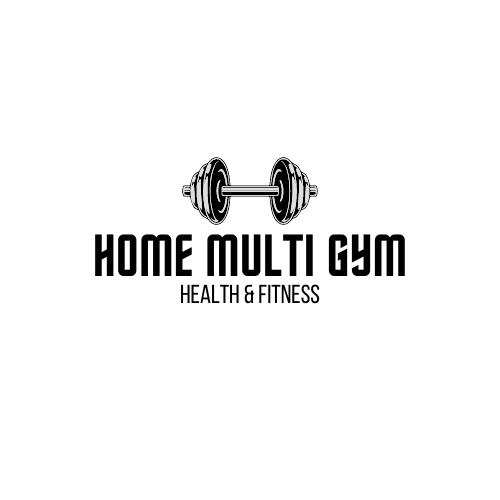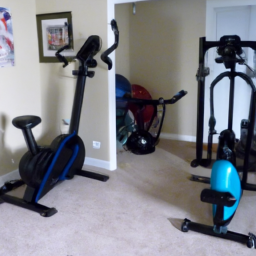Hey there! Have you ever wondered if there are any limitations on your height or reach when using a home multi-gym? Well, in this article, we’ll explore that question and provide you with all the information you need. Whether you’re tall, short, or somewhere in between, we’ll discuss if certain exercises on a home multi-gym may be more challenging for certain body types. So stay tuned and get ready to learn more about the limitations, if any, on user height or reach for specific exercises on a home multi-gym. When it comes to working out on a home multi-gym, it is important to understand and consider your own limitations, particularly in terms of height and reach. The design and functionality of a multi-gym can have a significant impact on the effectiveness and safety of your workouts, so it is essential to evaluate and adapt the equipment to suit your specific requirements.
Importance of User Height and Reach
User height and reach play a crucial role in determining the suitability and effectiveness of certain exercises on a home multi-gym. Different exercises target specific muscle groups and require varying degrees of motion and extension. Therefore, it is essential to take into account your height and reach to ensure proper form and avoid straining or injuring yourself during workouts.
Considerations for Specific Exercises
Certain exercises on a home multi-gym may be more challenging or even impossible to perform for individuals with certain height or reach limitations. Let’s explore some of the exercises affected by user height and reach.
Impact of User Height on Multi-gym Exercises
Exercises Affected by User Height
-
Lat pulldown: This exercise primarily targets the back muscles and requires a user to pull a bar downward towards the chest. Users with shorter heights may find it difficult to reach and grip the bar properly, potentially leading to improper form and reduced effectiveness.
-
Leg press: Shorter users may struggle with proper alignment and positioning on the leg press machine, which can compromise their ability to perform the exercise effectively. Additionally, tall users may face challenges in fully extending their legs without encountering interference from the machine’s structure.
Adjustments for Tall Users
Tall users often face issues with finding adequate space and extension on a home multi-gym. To address these limitations:
- Ensure the multi-gym has adjustable components like seat height, backrest position, or handles to accommodate taller users.
- Modify the exercise range by adjusting the angle or attaching additional extensions to the machine, allowing for full extension and range of motion.
Challenges for Shorter Users
Shorter users may struggle with exercises that require significant reach or involve higher platforms. Here are a few potential challenges:
- Dips: Users with shorter heights may find it challenging to reach the handles or dip bars without straining their shoulders or compromising their form.
- Pull-up bar: Shorter users may struggle to reach the pull-up bar with their feet off the ground, making it difficult to perform the exercise without assistance.
To overcome these challenges, consider the following adaptations:
- Use adjustable platforms or steps to provide additional height for shorter users.
- Utilize resistance bands or assistive devices to provide assistance and support during exercises that require reaching or pulling.
Effect of User Reach on Multi-gym Exercises
Exercises Requiring Extended Reach
Some exercises on a multi-gym demand extended reach to ensure proper execution and engagement of the targeted muscles. Here are a few examples:
-
Fly exercises: Exercises like chest fly or rear deltoid fly require reaching out with the arms. Users with limited reach may struggle to achieve the desired range of motion or fully engage the targeted muscles.
-
Cable rows: Proper form in cable rows requires a full extension of the arms, which may be challenging for individuals with shorter reach.
Accommodating Users with Limited Reach
For those with limited reach, there are several options available to ensure effective exercises:
- Use resistance bands with handles to mimic the motions of cable exercises. This allows for greater flexibility in adjusting the tension and accommodating limited reach.
- Opt for exercises that target the same muscle groups but have a shorter range of motion. This can help maximize the effectiveness of the workout without compromising safety or form.
Alternative Exercises for Different Reach Range
In cases where certain exercises are simply not possible due to reach limitations, it is crucial to identify alternative exercises that provide similar benefits. Here are a few examples:
- Substitute chest fly exercises with variations using dumbbells or resistance bands, which allow for a shorter range of motion.
- Replace cable rows with bent-over rows using free weights, allowing for greater customization and adjustment for users with limited reach.
Limitations of Multi-gym Design
The design of a home multi-gym can significantly impact the limitations users may face regarding height and reach. Understanding the design constraints is essential in evaluating a multi-gym’s suitability for different users.
Design Constraints Influencing User Height and Reach
- Fixed dimensions: Some multi-gyms have fixed dimensions for the seat, backrest, or handles, limiting adjustability and potentially posing challenges for taller or shorter users.
- Structural limitations: The structure and framework of certain multi-gym models may restrict the range of motion or interfere with a user’s ability to perform exercises comfortably.
Evaluating Multi-gyms for User Suitability
When considering purchasing a home multi-gym, it is crucial to evaluate how well it can accommodate your specific height and reach limitations. Look for the following features:
- Adjustable components: Seek out multi-gyms with adjustable seat height, backrest positions, or extendable handles to maximize usability for users of different heights and reaches.
- Customizable options: Consider models that offer attachments or accessories to modify exercise range or provide additional support for users with limited reach.
Maximizing Exercise Range for All Users
To ensure the home multi-gym caters to users of varying heights and reaches, it is essential to prioritize adjustable features and customization options.
Adjustable Features for Height and Reach
Investing in a multi-gym with adjustable components, such as seat height, backrest positions, or handles, can greatly enhance the usability for users of different heights and reaches. These adjustments allow for more comfortable and effective workouts, minimizing the risk of injury or compromised form.
Customization Options for Diverse Users
Look for multi-gyms that offer customization options, such as attachments or accessories, to modify exercise range or provide additional support for users with limited reach. These options can cater to individual needs and allow for a personalized workout experience.
Factors to Consider for Universal Accessibility
When purchasing a home multi-gym, it is important to consider the needs of all potential users, including those with physical limitations. Look for features like wheelchair accessibility, ergonomic design, and user-friendly controls to ensure all individuals can benefit from the equipment.
Ensuring Optimal Safety and Comfort
Safety and comfort should be top priorities when using a home multi-gym, especially when considering height and reach limitations. By following certain guidelines and incorporating ergonomic considerations, users can minimize the risk of injuries and maximize their workout experience.
Risk Assessment for Height and Reach Limitations
Users with height or reach limitations should perform a risk assessment for each exercise to identify potential safety concerns. This involves evaluating the range of motion, stability, and alignment to determine if any adjustments or alternative exercises are necessary.
Ergonomic Considerations for Multi-gym Design
Consider the ergonomics of the multi-gym, ensuring that the equipment is designed to promote proper posture and alignment during exercises. Ergonomic features, such as padded seats, adjustable backrests, and handles with proper grip surfaces, can enhance comfort and safety during workouts.
Preventing Injuries due to User Limitations
To minimize the risk of injuries, users must always prioritize safety and listen to their bodies. It is important to start with lighter weights, focus on proper form, and gradually increase the intensity of workouts over time. If any exercise causes discomfort or pain, it should be stopped immediately and modified accordingly.
Training Recommendations for Different Heights and Reaches
Understanding your own height and reach limitations allows you to tailor your training routine to suit your needs. Here are some training recommendations for users with varying heights and reaches:
Training Guidelines for Tall Users
- Focus on exercises that require greater range of motion, taking advantage of the advantages that come with being taller.
- Ensure the multi-gym you choose offers adequate adjustments to accommodate your height, such as adjustable seat height, backrest position, or handle extensions.
Training Tips for Shorter Users
- Emphasize exercises that require shorter ranges of motion to work within your limitations.
- Utilize step platforms or attachable assistive devices to compensate for limited reach during exercises that require higher platforms or reaching overhead.
Specific Advice for Users with Limited Reach
- Use resistance bands with handles to mimic cable exercises, allowing for greater adjustability and accommodating limited reach.
- Seek alternative exercises that target the same muscle groups but require shorter ranges of motion.
Seeking Professional Guidance
If you are unsure about how to adapt your workouts to accommodate your height or reach limitations, it is always recommended to seek guidance from fitness experts or personal trainers who can provide tailored advice and exercise programs.
Consulting Fitness Experts or Personal Trainers
Professional guidance can be incredibly valuable when it comes to understanding and adapting your workouts to suit your specific limitations. Fitness experts or personal trainers can assess your abilities, assess the equipment, and develop personalized exercise programs that maximize effectiveness while minimizing the risk of injury.
Evaluating Individual Limitations
By consulting with professionals, you can gain a better understanding of your individual limitations and how they may impact your workouts. They can help identify specific exercises or modifications that will allow you to achieve your fitness goals safely and efficiently.
Developing Tailored Exercise Programs
Fitness experts or personal trainers can create tailored exercise programs that take into account your height, reach, and any other limitations you may have. These programs will ensure that you get the most out of your home multi-gym workouts while minimizing the risk of injuries.
Considering Alternative Exercise Options
If your height or reach limitations prevent you from performing certain exercises on a home multi-gym, it is important to explore alternative options that can still provide similar benefits.
Exploring Exercise Alternatives for Limitations
Research and explore alternative exercises that target the same muscle groups but require different ranges of motion or equipment. This allows you to engage in a diverse range of exercises that are suitable for your physical abilities.
Utilizing Other Fitness Equipment
Incorporate other fitness equipment, such as dumbbells, resistance bands, or stability balls, into your workout routine. These versatile tools can provide alternative exercise options and allow you to target specific muscle groups effectively.
Combining Multi-gym Workouts with Different Exercises
Consider combining multi-gym workouts with other exercises, such as bodyweight exercises or cardiovascular activities like jogging or cycling. These combinations can provide a well-rounded workout routine that complements the functionality of the multi-gym while accommodating your height and reach limitations.
Conclusion
In conclusion, user height and reach are crucial factors to consider when using a home multi-gym. Understanding your limitations and evaluating the design and adjustability of your equipment is essential for safe and effective workouts. By making the necessary adjustments, seeking professional guidance when needed, and exploring alternative exercises, you can ensure that your home multi-gym caters to your specific height and reach requirements, allowing you to achieve your fitness goals while minimizing the risk of injuries.

